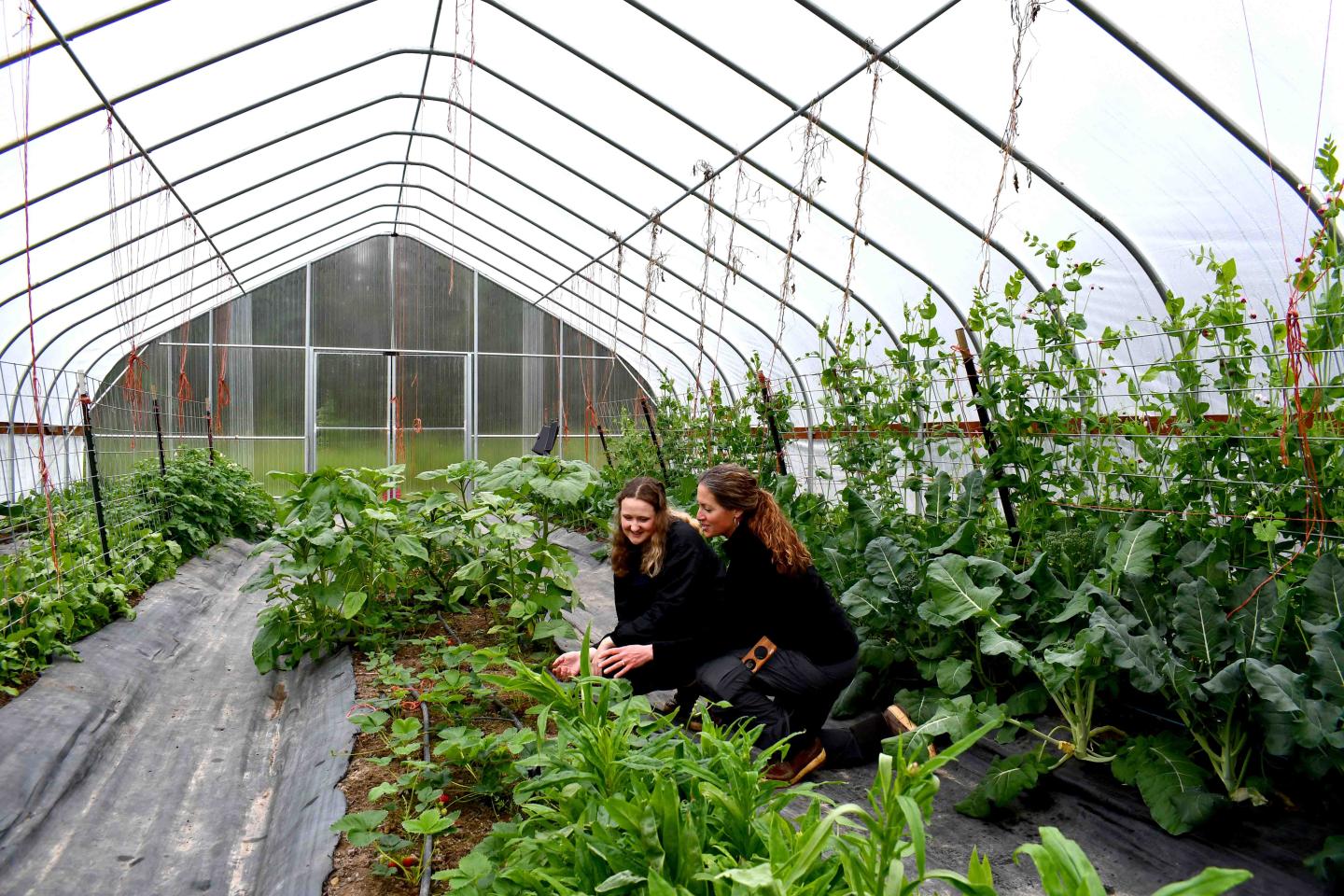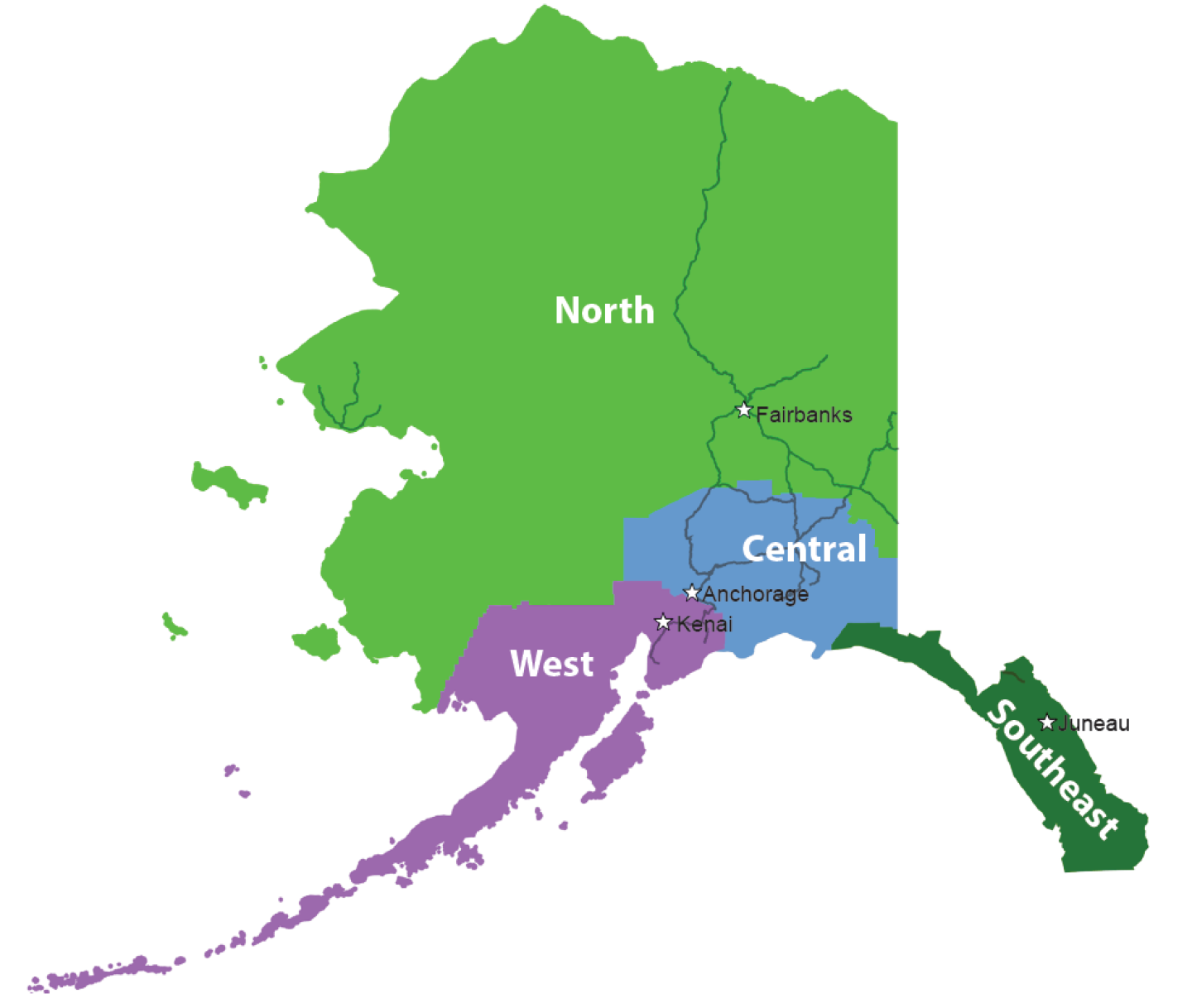The Natural Resources Conservation Service offers free technical and financial assistance to help Alaskans install Seasonal High Tunnels using the Environmental Quality Incentives Program (EQIP).
A Seasonal High Tunnel is an enclosed polyethylene, polycarbonate, plastic, or fabric covered structure that is used to cover and protect crops from sun, wind, excessive rainfall, or cold, to extend the growing season in an environmentally safe manner.
The benefits of a high tunnel include:
- Extend the growing season - plant earlier in the spring and grow later into the fall.
- Protect crops from frost, cold, excess rain and wind
- Improve plant health and vigor
- Increase crop yield
- Grow a wider diversity of crops that otherwise could not be grown outside
- Energy savings from local food production
- Improve local food security

Assistance for a seasonal high tunnel is offered through the Environmental Quality Incentives Program (EQIP). Apply for EQIP by contacting your local NRCS office.
High Tunnel Fact Sheets
Eligibility
There are three tiers of eligibility for EQIP: producer/participant eligibility, land eligibility, and resource concern eligibility.
Producer Eligibility:
- Must have a social security number or employer identification number issued by the IRS (entities require a Taxpayer Identification Number).
- Must show control of the land (lease, deed or other agreement) for the length of the NRCS contract.
- Must have an adjusted gross income of less than $900,000; however this requirement does not apply to Federally recognized Tribes and Alaska Native regional or village corporations.
- If the producer is an entity, must have signature authority to make management decisions on the land.
Land Eligibility:
- Land must have an agricultural production use such as cropland, rangeland, grassland, pasture or nonindustrial private forest land. Lands used for subsistence are also considered agricultural.
- Land must be in compliance with Highly Erodible Land and wetland compliance provisions.
Resource Concern Eligibility
- There must be a valid natural resource problem on the land to receive NRCS financial assistance for the project. An NRCS conservation planner will help you determine specific natural resource concerns on your property.
High Tunnel Frequently Asked Questions
What is a high tunnel?
High tunnels are enclosed polyethylene, polycarbonate (plastic), or fabric covered structures used to cover plants to extend the growing season.
What are the benefits of a high tunnel?
High Tunnels provide an intermediate level of environmental protection and control compared to open field conditions and heated greenhouses. They create a micro-climate inside the tunnel that raises the temperature and protects crops from potentially damaging weather. Crops tend to be of higher quality and produce higher yields than field-grown crops. Overall, high tunnels provide an energy-efficient way to extend the growing season, reduce or avoid use of pesticides, and reduce runoff and leaching of nitrogen into the soil.
What are high tunnels made of?
The frame can either be metal or wood. Polyethylene covers must be UV (ultraviolet light) protected. High tunnels are usually covered with a single layer of plastic and are passively-ventilated using roll-up side and end walls which can be opened or removed.
Are high tunnels the same as greenhouses?
No. Greenhouses usually contain heaters and the plants inside them are grown in containers such as pots and trays. High tunnels don’t use heaters and the plants inside them grow directly in the ground in the natural soil profile. Unlike greenhouses, high tunnel systems are seasonal and are considered temporary structures.
How are crops grown in a high tunnel?
Crops must be grown in the natural soil profile or by installing permanent raised beds up to 12 inches in depth/height. Crops may not be grown on tables or benches, in pots, or hydroponically, for the NRCS conservation practice.
Are low tunnels the same as high tunnels?
No. The structure must be six feet or greater in height in the center; therefore, row covers and low tunnels do not qualify as high tunnels.
Can I design my own high tunnel?
No. To receive financial assistance from NRCS, you must purchase a high tunnel kit, also called a manufactured high tunnel, from a commercial source. You may install a commercially-obtained kit yourself.
What is a “manufactured” high tunnel?
NRCS requires a manufactured high tunnel obtained from a commercial source. These structures are sold as kits and generally contain all of the required materials and hardware to build the structure except for the lumber needed for baseboards and end walls. Individual kits vary by supplier and manufacturer. High tunnels must be planned, designed and constructed in accordance with the manufacturer’s recommendations. Not all manufactured kits meet NRCS specifications. See the NRCS Implementation Requirements Sheet from your local NRCS office for more information.
What are the structure requirements for a high tunnel?
Wood-frames and metal-frames have different requirements. Geodesic dome structures are not approved as a high tunnel system. Please see the NRCS Implementation Requirements Sheet from your local NRCS office for specifications. Vendor claims of meeting NRCS specifications must be verified by the participant. NRCS does not endorse any product, company or brand of high tunnel.
Can I install a used high tunnel?
No. NRCS prohibits the use of used materials for constructing a high tunnel.
What is the life span of a high tunnel?
5 years according to the NRCS conservation practice standard. However if maintained properly, high tunnels may continue to function longer.
Is there a size limit for the high tunnel system?
No. There is no maximum size limit to the high tunnel system, but there is a minimum height requirement of 6-feet at the peak of the structure.
Can I install electricity to power heating or cooling units in the high tunnel system?
Yes, but NRCS financial assistance is provided only for the structure itself. Electricity, venting systems, lighting etc. can be installed providing the additions meets manufacturer’s designs and specifications. However, the grower is responsible for those costs.
Can I leave the high tunnel up all year?
NRCS strongly recommends that the plastic high tunnel cover be removed after each growing season to prevent the structure from collapsing under extreme snow loads. Management of the high tunnel will depend on climatic conditions. Consult the manufacture’s specifications and climate condition management in your area.
Am I responsible for repairing damages to the high tunnel?
Yes. Your NRCS conservation plan specifies that you must maintain the high tunnel for 5 years and replace any damaged parts at your own cost. You are responsible for repair or replacement of a high tunnel damaged by ice, snow, wind, fire, flood, animals, or other causes. Failure to do so may result in termination of your contract and payback of liquidated damages.
Are there limitations on where I can install a high tunnel system?
Since the high tunnel conservation practice is used to treat a natural resource concern, it must be placed on land where crops are growing in the natural soil profile, and where there is a demonstrated resource concern. Crops must be growing in the soil so that NRCS may identify and document any resource concerns associated with that cropland. The maximum ground slope allowed is 5 percent.
What can’t a high tunnel be used for?
High Tunnels may not be used for:
- Growing crops on benches or in pots
- Producing a substance that is federally restricted, such as marijuana.
- Livestock or poultry production
- Storage of equipment, furniture or supplies.
If I already have a high tunnel, can I apply for another one?
Yes, but only if the additional high tunnel would be placed in a separate growing area (not the same location as an existing high tunnel or replacing a current high tunnel) and if there is a demonstrated natural resource concern on the site.
Contact Your Local NRCS Field Office to Apply

- Delta Junction
1420.5 Alaska Hwy
Delta Junction, AK 99737
(907) 895-4241
- Fairbanks
590 University Ave, Suite B
Fairbanks, AK 99709
(907) 479-3159
- Homer
432 E. Pioneer Ave, Suite C
Homer, AK 99603
(907) 235-8177
- Juneau
709 W. 9th St
Suite 285C
Juneau, AK 99801
(907) 586-7220
- Kenai
110 Trading Bay Dr, Suite 160
Kenai, AK 99611
(907) 283-8732
- Kodiak
301 Research Court, Room 245
Kodiak, AK 99615
(907) 486-5598
*By appointment only
- Wasilla
1508A E Bogard Rd
Wasilla, AK 99654
(907) 373-6492

